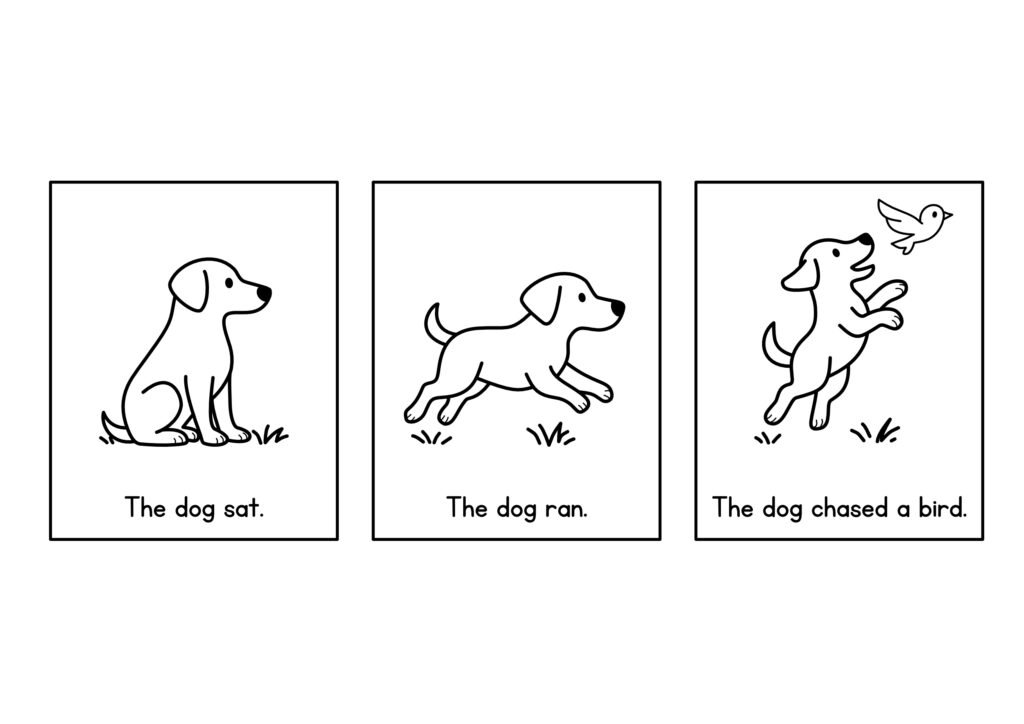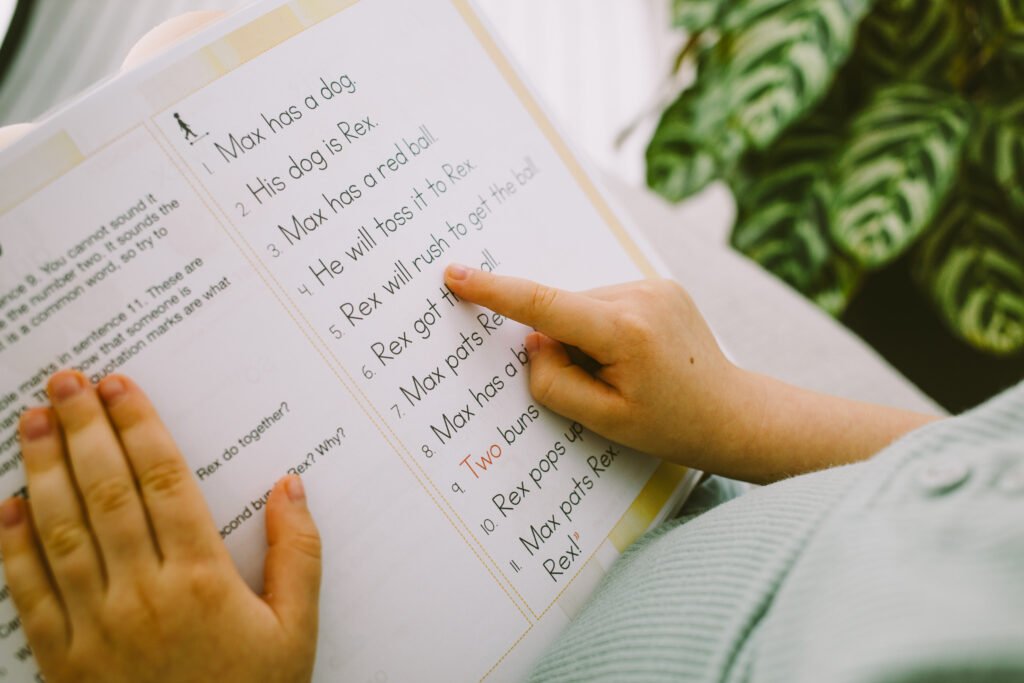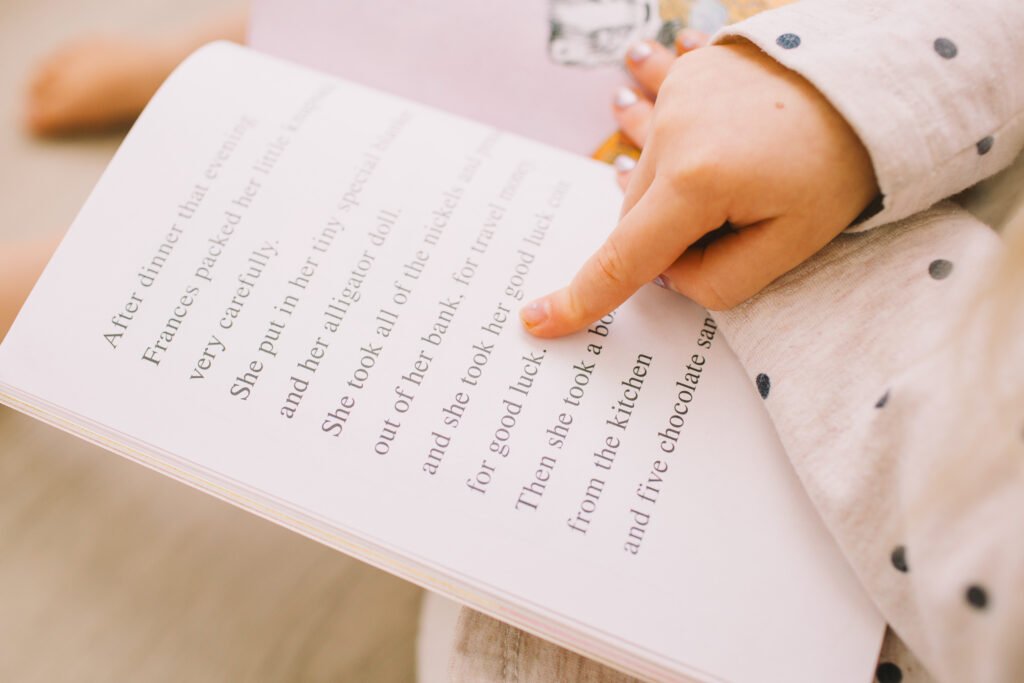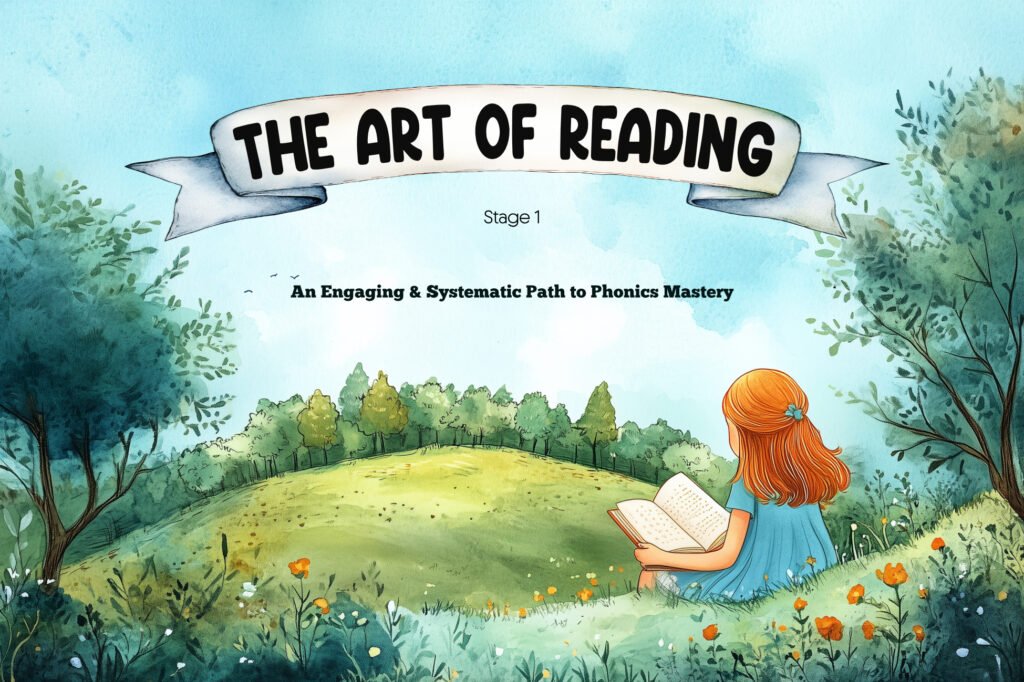Is Your Child Really Reading, Or Just Guessing?
The Illusion of Progress
Why do phonics readers without pictures make a difference? The child appears to read fluently, glancing at the picture and confidently saying the words. But in reality, a lot of the time kids can easily guesstimate the content of early readers based on the images, this isn’t real decoding. When children rely on images to guess the story, they bypass decoding process entirely, missing the point of the exercise – sounding out words and blending them together. This creates an illusion of reading, without actually working on the practicing decoding.
Pictures in early readers, while well-intentioned, can actually get in the way of learning to read. That’s why we take a different approach. Our phonics readers are intentionally designed without illustrations, not to make things harder, but to ensure that children focus on what really matters: the words on the page.

readers without pictures
When you take away the visual cues, children are no longer able to guess. They’re required to look at the letters, think about the sounds, and apply what they’ve been taught. This builds accuracy and the kind of fluency that comes from mastering a skill, not shortcuts.
Phonics readers need to give children the chance to practise each concept in context, using controlled text, without distractions. When illustrations are intentionally left out, children have no choice but to focus on the words. This encourages them to sound out each word, recognise patterns, and build the skills that reading depends on.
The goal at this stage is simple:
Train the eyes and the brain to work together to read the text, not guess what it says.

You will be able to see the gaps:
In phonics readers without pictures, you can clearly see your child’s progress and true reading ability. When images are not giving away the plot, it is easier to see where a child may be struggling and what concepts need to be revisited. It reveals gaps in knowledge and gives a clear picture of where support is needed.
“But the plot will be boring! I want my child to enjoy the story”
That’s not the goal of early phonics readers. Remember: they are practicing decoding.
Because early phonics readers are limited to a small set of sounds and decodable words, the sentences can sometimes feel simple or even bland. This is intentional, introducing too many unfamiliar sounds too soon can compromise decoding.
Simple doesn’t mean ineffective:
This is where strong comprehension questions come in. Instead of relying on illustrations or unnecessary sight words, with carefully guided questions, we can help children build a richer understanding of what they’ve read and encourage them to imagine the story in their mind. As their decoding skills grow, so does the complexity of the stories they can read, making room for more detailed plots, richer language, and even humour.

At this stage, the focus needs to be on decoding, not guessing. Pictures can wait. Right now, it’s about teaching your child to read the words on the page.

